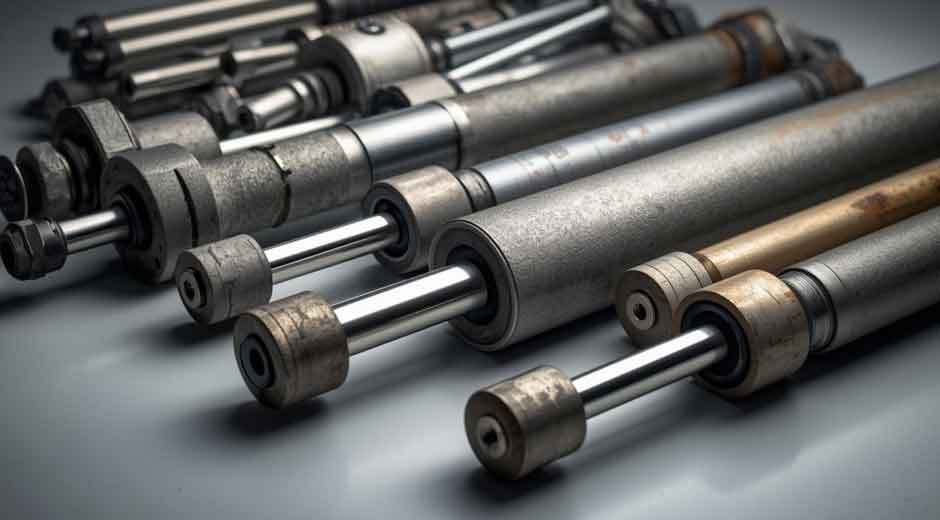Skip to the good bit
ToggleThe hydraulic cylinders supply the power to an excavator to dig, a dump truck to lift its bed, and more, which play the role of muscles of the machine. Although hydraulic cylinders may look simple, they boast different designs, each made for different jobs. This guide will break down all the main types of hydraulic cylinders, learn now.
Hydraulic Cylinder Types
Classified By Action
Single-Acting Cylinder
- Works in one direction only.
- Hydraulic fluid pushes the rod out, but gravity or load weight pulls it back.
- Application: Dump truck beds, hydraulic jacks, forklifts.
Double-Acting Cylinder
- Works in both directions.
- Hydraulic fluid pushes and pulls, giving precise control.
- Application: Excavator arms, steering systems, and manufacturing machines needing two-way control.
Classified By Construction
Tie-Rod Cylinder
- End caps held by long steel rods.
- Easy to service and repair, widely used in factories.
- Application: Industrial presses, machine tools, automated production lines.
Welded Body Cylinder
- Barrel and base are welded together for strength.
- Compact, rugged, and harder to repair.
- Application: Construction equipment (excavators, loaders), agricultural machinery (tractors, harvesters).
Classified By Special Function
Telescopic Cylinder
- Multiple nested tubes extend like a telescope.
- Long stroke, short retracted size.
- Application: Dump trucks, cranes, roll-off trucks needing high lift in a limited space.
Ram Cylinder
- Rod and piston are the same size.
- Built for a very strong pushing force.
- Application: Heavy presses, lifting jacks, situations requiring an immense push.
Through-Rod (Double-Rod) Cylinder
- Rod extends out both ends.
- Same power and speed in both directions.
- Application: Vehicle steering systems, equipment needing perfectly symmetrical movement.
Cushioned Cylinder
- Slows down before reaching the end of the stroke.
- Prevents harsh impacts and protects the machine.
- Application: High-speed or heavy-load machines where sudden stops damage parts.
Tandem Cylinder
- Two or more pistons on one rod.
- Boosts force without needing a bigger diameter.
- Application: Brake systems, industrial clamps, compact presses.
Which Hydraulic Cylinder Type Is Right for Me?
Selecting the right hydraulic cylinder is not just about picking a type—it’s about matching your machine’s requirements:
- Force required: Larger loads need bigger bore sizes or tandem cylinders.
- Stroke length: Choose based on how far the rod needs to extend. For long travel in a compact space, use a telescopic.
- Direction of load: Use single-acting for one-way tasks, double-acting for two-way precision.
- Working environment: Welded body cylinders handle shock and dirt better; the tie-rod is easier to clean in factory settings.
- Maintenance needs: If easy service is important, stick with tie-rod designs; if durability matters more, go welded.
By considering these factors, you ensure longer service life, better efficiency, and lower risk of downtime.
Key Takeaway: The right type depends on your machine’s job: whether you need simple lifting power, precise control, extra durability, or a special function like cushioning or telescopic reach.
Conclusion
- By action, you can choose one direction’s single‑acting cylinders or two directions’ double‑acting cylinders.
- By construction, choose tie‑rod cylinders where easy maintenance matters, while choosing body cylinders for harsh, heavy‑duty conditions.
- By special function, telescopic, ram, through‑rod, cushioned, and tandem cylinders can solve unique engineering challenges where space, force, or motion control are key.
Ultimately, the “right” cylinder depends on your requirements. By understanding these cylinder types and how they’re used, you can make smarter choices that improve both performance and reliability.







